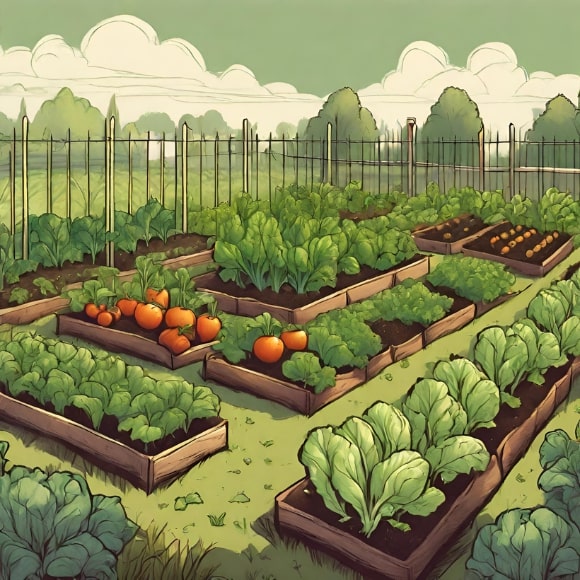
Vegetable gardening is a rewarding and fulfilling activity that lets you grow your own fresh produce, fostering a deeper connection to nature and promoting self-sustainability. But successful gardening requires an understanding of the climate and environmental conditions in a particular region. You need to know your hardiness zone to determine which vegetables are suitable for your specific location.
Understanding Plant Hardiness Zones
Plant hardiness zones are geographical areas defined by climatic conditions, particularly minimum Winter temperatures, which determine the types of plants that are likely to thrive in a specific region. The USDA Plant Hardiness Zone Map divides the United States into 13 zones, each representing a 10-degree Fahrenheit difference in the average annual minimum temperature. Zone 1, for example, has minimum temperatures below -50°F, while Zone 13 has minimum temperatures above 60°F.
The Importance of Plant Hardiness Zones in Vegetable Gardening
Plant hardiness zones play a crucial role in vegetable gardening; they help gardeners pick plants that are well-suited to their local climate and environmental conditions. Different vegetables have specific temperature requirements for germination, growth, and fruit production. By choosing vegetable varieties that are recommended for their plant hardiness zone, gardeners can increase the likelihood of successful harvests and reduce the risk of plant stress, disease, and failure.
Selecting Vegetables Based on Plant Hardiness Zones
When planning a vegetable garden, it’s essential to choose vegetable varieties that are appropriate for the local plant hardiness zone. Gardeners can consult seed catalogs, gardening websites, and local extension offices for information on which vegetables are best suited to their zone. For example, cold-hardy crops such as kale, spinach, and carrots are well-suited to cooler northern zones, while heat-loving crops such as tomatoes, peppers, and okra thrive in warmer southern zones.
Extending the Growing Season
Understanding plant hardiness zones can also help gardeners extend the growing season by selecting vegetable varieties that are suitable for their zone and planting them at the appropriate times. In colder climates, gardeners can start seeds indoors or use season-extending techniques such as row covers, cold frames, or hoop houses to protect plants from frost and cold temperatures. In warmer climates, gardeners can take advantage of the longer growing season by planting heat-tolerant varieties and providing shade and sufficient moisture during hot summer months.
Adapting to Climate Change
As climate change continues to influence weather patterns and temperatures, plant hardiness zones may shift, affecting gardening practices and plant selection. Gardeners may need to adapt by picking vegetable varieties that are better suited to their changing climate and exploring new gardening techniques to mitigate the effects of extreme weather events such as heatwaves, droughts, and storms. Incorporating practices such as mulching, composting, and water conservation can help improve soil health and resilience in the face of climate challenges.
Plant hardiness zones are a valuable tool for vegetable gardeners, providing guidance on which plants are best suited to their local climate and environmental conditions. By understanding your plant hardiness zone and selecting vegetable varieties accordingly, you can increase the likelihood of successful harvests and enjoy a bountiful supply of fresh produce throughout your growing season.


 Previous
Previous


This is a very informative and necessary article and I am very grateful to be able to read it! As usual Christy, I love your artwork, you are truly gifted and blessed.